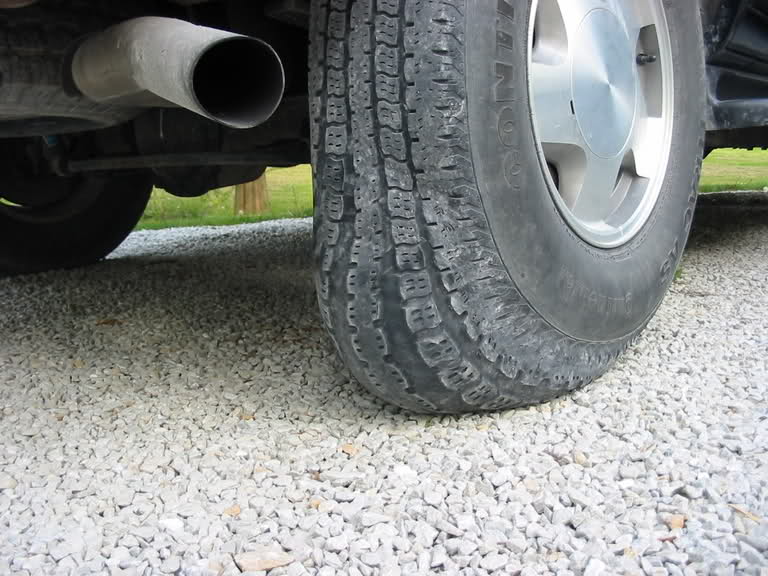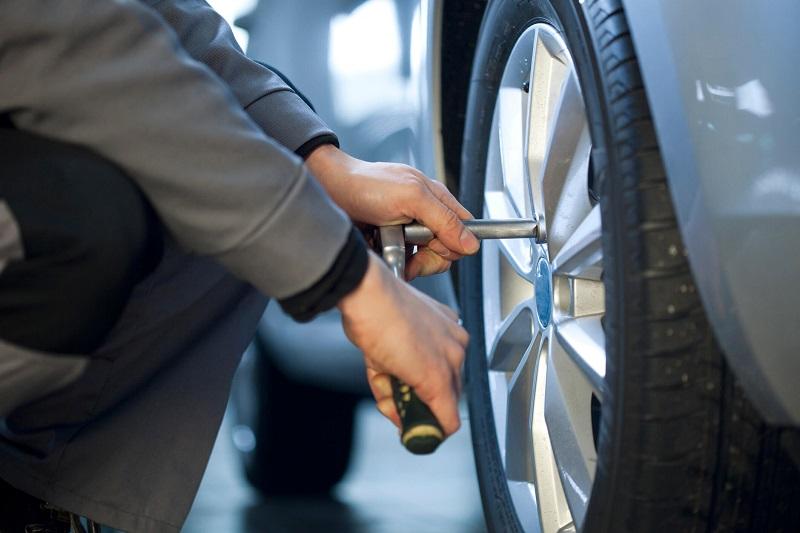Car tires will wear out over time. There’s no way to stop it. As they take a beating every time you drive, they are supposed to get old and fail at one point. How do you know when to change your tires? It is necessary to know because a failed or ruptured tire in the middle of a road could be catastrophic.
Contents
When to Change Your Tires: The Warning Signs
You cannot predict the lifespan of a tire. It depends on several factors including the car’s mileage, your driving habits, the tire’s model and design, the climate, and the road conditions. Nevertheless, according to many auto manufacturers, drivers should change tires after about 60,000 – 100,000km. However, some types of tires allow users to drive up to 130,000km or only 50,000km. When this level is reached, the owner needs to replace new tires to improve the vehicle’s performance. Additionally, there will be some warning signs that will tell you when to replace tires. Let’s find out some of the symptoms of bad tires:
1. Worn out tread
The minimum legal depth from the tire tread is 1.5 mm across the width. It’s important to have that much thickness to ensure safety while driving. Tires with worn-out tread don’t have a good grip and can skid on the roads in rainy and snowy conditions. Also, a thin tread puts pressure on other car components and damages them.

With a penny, you can find out if the tread of the tires has the right depth. You will find several grooves across a tire. Place a penny head into one of them and see if you can see the top of Lincoln’s head. If not, your tires are still good but it’s time to change them if you can see the head.
2. Age of the tires
Counting the age is another good way to figure out when to replace tires. The auto manufacturers recommend replacing the tires every 6 years while the tire makers suggest doing it at 10 years. You should professionally diagnose them at least once per year after five years of use. Replace them when they are ten years or older.
See more:
3. Sidewall cracks
If the marks of tracks and cuts on the sidewall are visible to the naked eye, it’s time to change the tires. It could be a warning that a leak is growing or the tire is on the verge of blowing out. So, whenever you find grooves on the sidewall, go to a car servicing shop to have the tires repaired or replaced.
4. Bulges on tire’s exterior
When the tires are extensively used or become old, some spots on their exterior surface can swell. These bumps protrude outward and they are susceptible to blow out any time. If you see these lumps on the tire surface, change them immediately.

6. Severe vibration
Every car vibrates at the time of driving but if the vibration is more than usual, there must be something wrong. If there is too much tremble, misaligned or unbalanced tires could be the problem. Even if the tires are not the source of the trouble, too much shaking will affect them ultimately. So, if you are ignoring the shaking for quite a long time, that could be the time’s up for the tires.
Check out this video for more details:
Experience When Replacing Car Tires
After understanding the signs of bad tires, drivers need to be equipped with experience in properly replacing tires. Accordingly, to ensure the vehicle’s performance, car owners should replace all 4 tires at once. And, when the mileage reaches about 10,000km, users should rotate the tires.
Drivers should choose tires suitable for their daily commute to optimize costs and ensure safety. Specifically:
Urban roads: You should choose tires with smooth, small treads with the ability to withstand good pressure and high noise resistance.
On highways with high operating speeds: You should choose tires with good traction and braking distance.
On rough, complex roads: You should choose tires with large contact surfaces, large tread, good traction, and high durability.
Some tips to maintain your tires:
- Drivers should avoid driving too fast, braking suddenly, and comply with load regulations. This helps the tire’s friction force with the road surface at a sufficient level, helping the vehicle move smoothly and increasing its lifespan.
- Proper tire patching helps prevent the penetration of external factors such as water, dirt, and mud… causing rust and oxidation. This method will save costs and at the same time ensure safety when driving.
- Give their vehicles for periodic inspection and maintenance. This helps car owners detect damage early and replace tires promptly.
Hopefully, this article will be useful for you. If you have any questions about car tires, give us a comment in the box below.




Undoubtedly, the tire is one of the indispensable constituents of the automobile. A defective tire can make your prized possession a lawn ornament. Like other components, it can leak and lose contact with road surface. Excessive road noise, frequent tire leaks, less traction on the wet streets, constant vibration during the navigation- are the syndromes by which you can guess that your old faithful requires new tire for performing in the pristine mode. Whenever you observe any of these intimations and find your car tire warning light is on, you should replace the rubbers by taking the help of a certified car engineer right away.
Tires with little or no tread depth couldn’t generate better traction on the road surface and driving a vehicle with such kinds of tires could lead to an accident. So, tread depth should be measured on a daily basis and tires having tread depth less than that of recommended should be replaced with suitable substitutes. Penny test is one of the most effective ways to measure the tread depth.
I’m glad you explained that tires with worn-out tread don’t have proper traction and can skid on wet roads. Recently, I have noticed that my tires were starting to look a little worn-down, but I thought that I could make them last a little longer. It would probably be a good idea to get new tires.